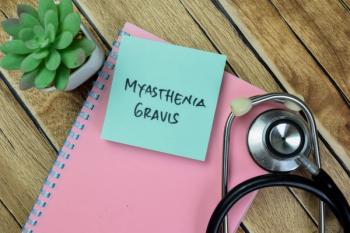
Nearly half of patients treated with zilucoplan were considered responders on Myasthenia Gravis Activities of Daily Living (MG-ADL) at the first week, suggesting a rapid onset of efficacy.

Nearly half of patients treated with zilucoplan were considered responders on Myasthenia Gravis Activities of Daily Living (MG-ADL) at the first week, suggesting a rapid onset of efficacy.

Investigators conducted a case study of a patient who presented with COVID-19–induced seronegative myasthenia gravis, seeking more information on neurological manifestations of the respiratory disease.

Lymphoplasmapheresis (LPE) was also completed with fewer replacements compared with plasma exchange (PE) for myasthenia gravis (MG).

The patient was found to have Toxoplasma gondii, a parasitic infection, and died 5 months after his initial diagnosis.
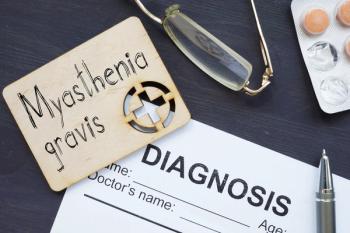
However, few patients with nonthymomatous myasthenia gravis (NTMG) undergo this procedure, results suggest.
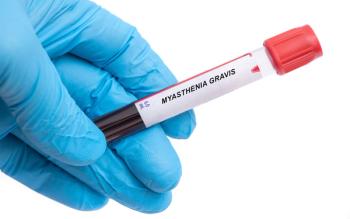
A real-world study of 5 European countries shows frequent misdiagnoses/delays in diagnosis, acute hospitalizations, and quality-of-life impairments.
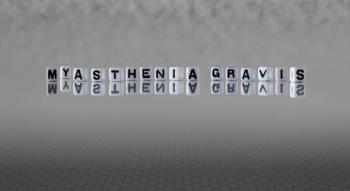
The patient in this case experienced significant muscle weakness after emerging from anesthesia.
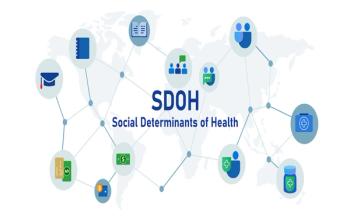
The rare autoimmune disorder generalized myasthenia gravis can cause muscle weakness in the limbs and face.

The treatment is the first approved by the FDA to treat the 2 most common subtypes of generalized myasthenia gravis.

Future myasthenia gravis therapies have different mechanisms of action than current treatments, said James F. Howard Jr, MD, professor of neurology at the University of North Carolina at Chapel Hill.

James F. Howard Jr, MD, professor of neurology at the University of North Carolina at Chapel Hill, explains how nerve and muscle signaling in the neuromuscular junction go awry in myasthenia gravis.
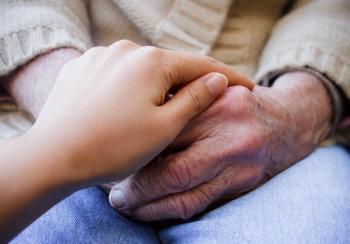
Both complement inhibitors and neonatal Fc receptor blockers led to improvements in symptoms, according to a meta-analysis.

The scale is meant to better quantify how clusters of symptoms impact patients’ quality of life.

Unmet needs include both improved myasthenia gravis treatments as well as a way to monitor progression of the disease, said James F. Howard, Jr, MD, professor of neurology at the University of North Carolina at Chapel Hill.

Current myasthenia gravis therapies can exacerbate comorbidities or create other complications, said James F. Howard Jr, MD, professor of neurology at the University of North Carolina at Chapel Hill.

The majority of respondents living with generalized myasthenia gravis (MG) were not working, the results showed.

Myasthenia gravis expert James F. Howard, Jr, MD, professor of neurology at the University of North Carolina at Chapel Hill, explains the burdens that step therapy places on patients with rare diseases and their providers.
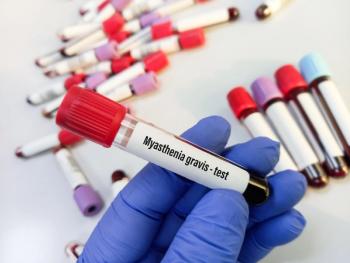
A new small case series finds higher rates of symptom flares in individuals who have muscle-specific tyrosine kinase (MuSK)–positive myasthenia gravis (MG) than previous research.

The training did not, however, affect postoperative limb skeletal muscle weakness or exercise capacity.
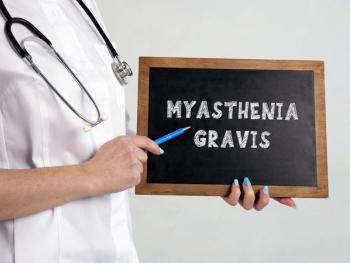
The findings support policies urging vaccination of individuals who have myasthenia gravis (MG).
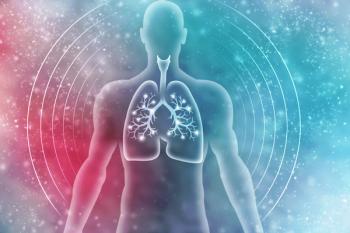
A patient’s inability to count while holding their breath can be an indication of respiratory distress in myasthenia gravis.

Results from 2 late-stage trials evaluating generalized myasthenia gravis therapies indicated both drugs, rozanolixizumab and zilucoplan, have potential as targeted treatment options.

People with myasthenia gravis (MG) had a higher risk of hospitalization for COVID-19 compared to the general population and a control group of people with rheumatoid arthritis (RA).

A new case series highlights characteristics and challenges of this subgroup of patients with myasthenia gravis (MG).

James F. Howard, Jr, MD, professor of neurology at the University of North Carolina at Chapel Hill, explains the antibody subtypes associated with this rare neuromuscular disease.

259 Prospect Plains Rd, Bldg H
Cranbury, NJ 08512
© 2025 MJH Life Sciences®
All rights reserved.
